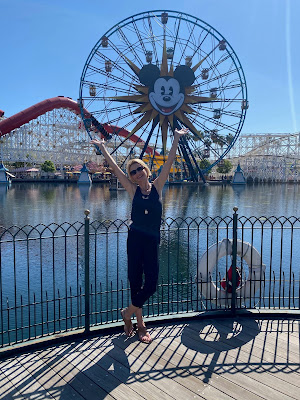 |
| Me, admiring The Russian Bride's Attire by Makovsky |
After visiting the Legion of Honor museum in San Francisco recently, my son airdropped this photo (above) to my iphone.
I had no idea he’d taken it.
At the time, I was captivated by that specific painting. Not only is it a beautiful work of art, but I also marveled at the many stories told within the brushstrokes.
Unbeknownst to me, Brendan captured that moment with a quick click of his camera. When I saw the image, I was touched that he did. 🥰
On our drive home I asked with a smile, “What prompted you to take that picture of me?”
He replied plainly, “I wanted a picture of the painting, and you were in the way.”
😳
Ah, out of the mouths of babes…
(I laughed so hard!)
Bren scored an A+ for honesty.
But I’m going to work with him on his tact. 😆
Tact marries honesty with kindness. There was little need for too much tact in the illustration above, but difficult conversations such as giving feedback or addressing conflict all benefit from a hefty dose of it.
Tact is a pillar of effective communication.
Here are a few tips to help master the art of tact in difficult conversations.
1. Pause. The kindful communication I preach starts with a pause. Take a breath and give yourself some space between stimulus and response. If someone asks a question (stimulus), pause before answering (response). That mindful moment illuminates your communication options. Choose the kindest one for the situation. No artificial sweetener necessary—choose the response that maintains the truth and doesn’t cause pain or embarrassment to the person involved.
2. If starting a difficult conversation, declare your intent. I talk more about it here, but essentially, get crystal clear on the outcome you seek, and announce it. For example,
“I’d like to talk about your Q4 performance and strategize ways to improve.”
“I want to discuss how we handled the most recent conflict. I know we can do better and I want to try.”
3. Claim your subjectivity and be specific. Instead of saying, “Some of your ideas are better than others” say “For me, some of your ideas resonate more than others.” Instead of, “Your presentation bombed,” say, “From my perspective, the presentation lacked a call to action.”*
*Bonus points for throwing the conversational ball back and asking, “What do you think?”
4. Eliminate any sense of anger, accusation, and sarcasm from your tone, word choice, and nonverbals. This is easier said/read than done. Be a careful observer of your messaging—how it looks, sounds, and how it might be interpreted.
5. And finally, though maybe most importantly, empathize. What's going on for the recipient of your message? How might they feel? It doesn’t really matter how you would feel if you were them—empathy is about them, not you. Remember the Platinum Rule: Treat others as they want to be treated.
Tact: It's a timeless form of communicative art. 🎨 🖌





